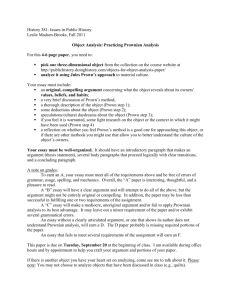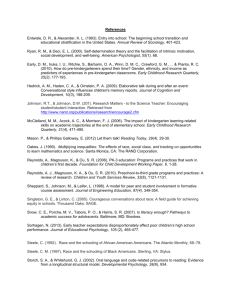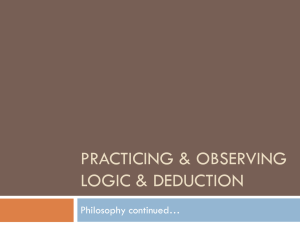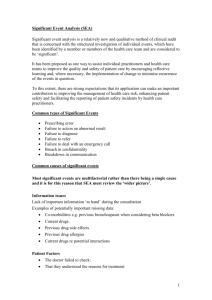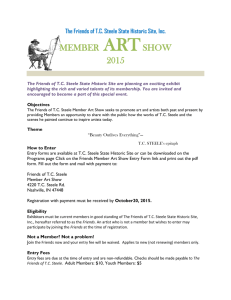Barbies, Bras, Sneakers & Object Analysis
advertisement
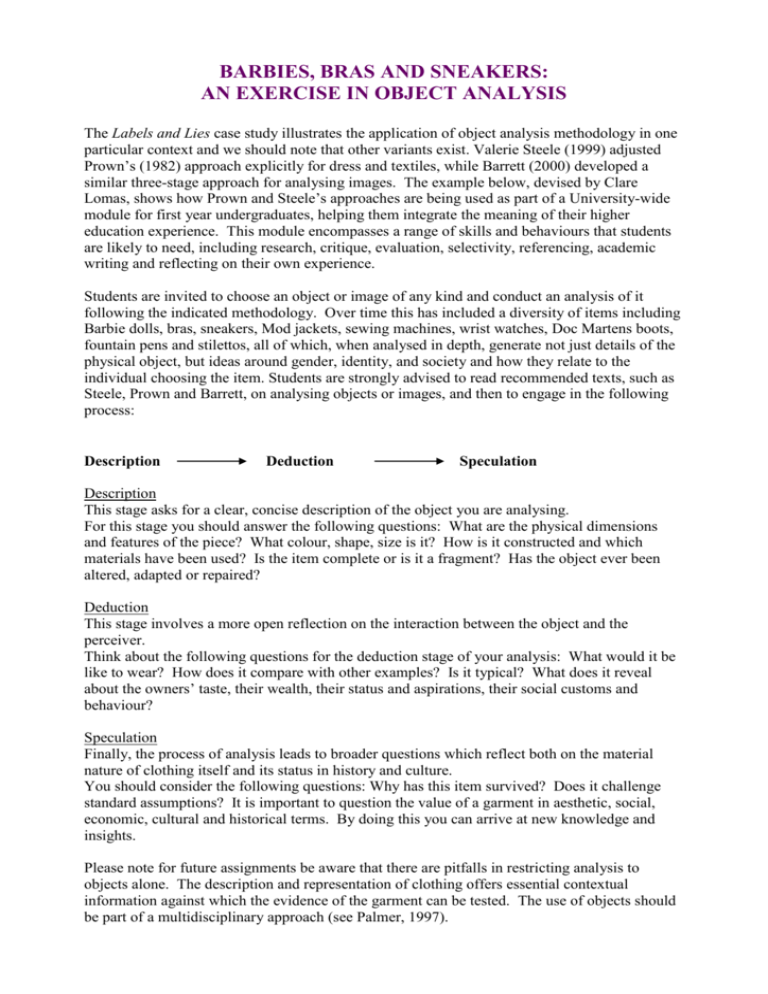
BARBIES, BRAS AND SNEAKERS: AN EXERCISE IN OBJECT ANALYSIS The Labels and Lies case study illustrates the application of object analysis methodology in one particular context and we should note that other variants exist. Valerie Steele (1999) adjusted Prown’s (1982) approach explicitly for dress and textiles, while Barrett (2000) developed a similar three-stage approach for analysing images. The example below, devised by Clare Lomas, shows how Prown and Steele’s approaches are being used as part of a University-wide module for first year undergraduates, helping them integrate the meaning of their higher education experience. This module encompasses a range of skills and behaviours that students are likely to need, including research, critique, evaluation, selectivity, referencing, academic writing and reflecting on their own experience. Students are invited to choose an object or image of any kind and conduct an analysis of it following the indicated methodology. Over time this has included a diversity of items including Barbie dolls, bras, sneakers, Mod jackets, sewing machines, wrist watches, Doc Martens boots, fountain pens and stilettos, all of which, when analysed in depth, generate not just details of the physical object, but ideas around gender, identity, and society and how they relate to the individual choosing the item. Students are strongly advised to read recommended texts, such as Steele, Prown and Barrett, on analysing objects or images, and then to engage in the following process: Description Deduction Speculation Description This stage asks for a clear, concise description of the object you are analysing. For this stage you should answer the following questions: What are the physical dimensions and features of the piece? What colour, shape, size is it? How is it constructed and which materials have been used? Is the item complete or is it a fragment? Has the object ever been altered, adapted or repaired? Deduction This stage involves a more open reflection on the interaction between the object and the perceiver. Think about the following questions for the deduction stage of your analysis: What would it be like to wear? How does it compare with other examples? Is it typical? What does it reveal about the owners’ taste, their wealth, their status and aspirations, their social customs and behaviour? Speculation Finally, the process of analysis leads to broader questions which reflect both on the material nature of clothing itself and its status in history and culture. You should consider the following questions: Why has this item survived? Does it challenge standard assumptions? It is important to question the value of a garment in aesthetic, social, economic, cultural and historical terms. By doing this you can arrive at new knowledge and insights. Please note for future assignments be aware that there are pitfalls in restricting analysis to objects alone. The description and representation of clothing offers essential contextual information against which the evidence of the garment can be tested. The use of objects should be part of a multidisciplinary approach (see Palmer, 1997).
